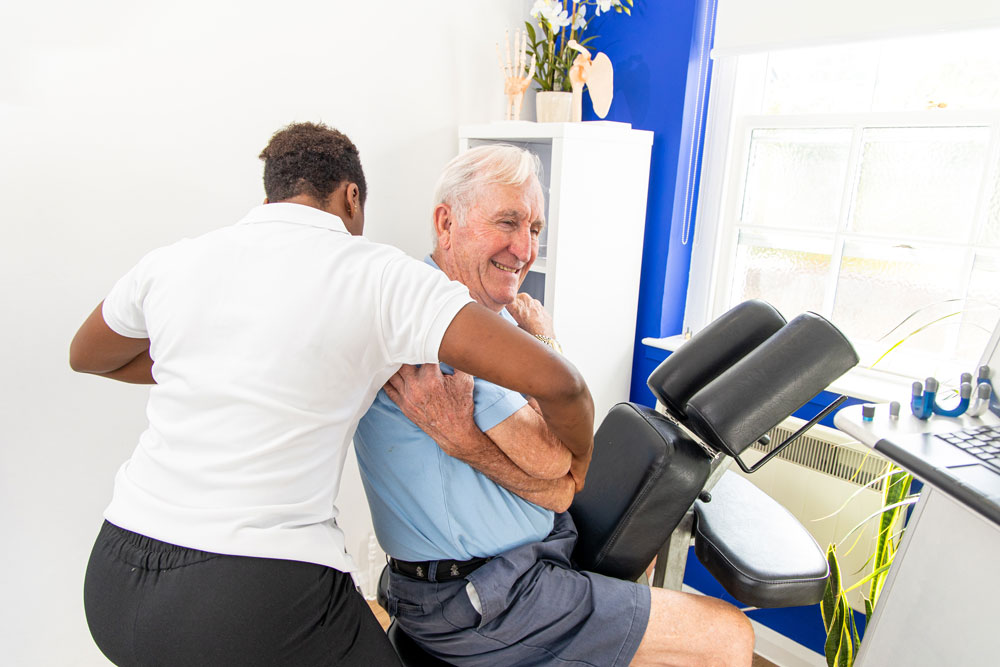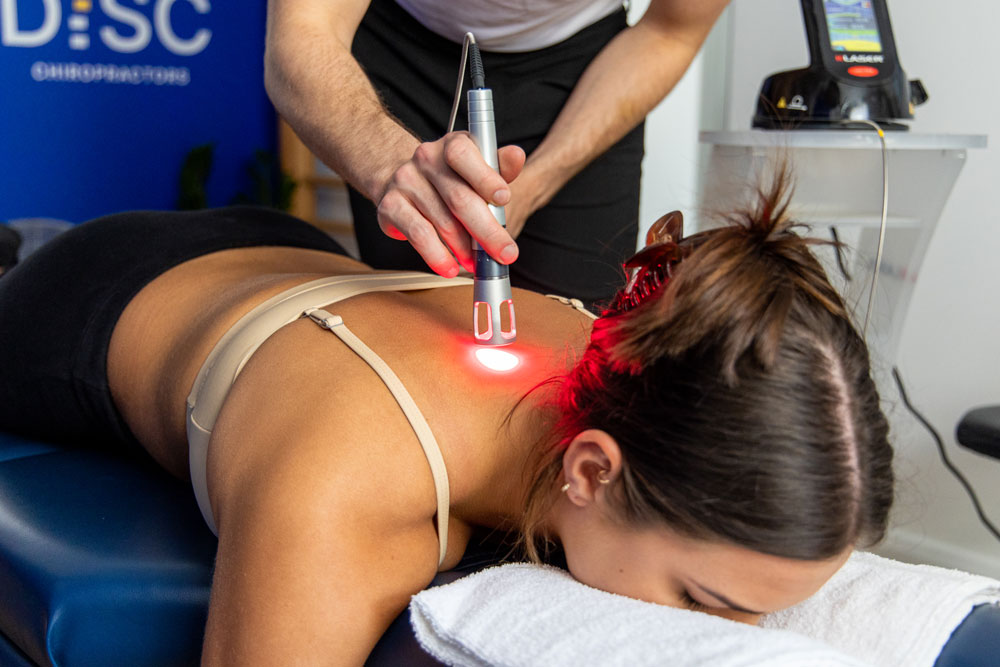Elbow Pain
Book NowYour elbow joint is a joint made up of three bones: the upper arm bone (humerus) and the two bones in the forearm (radius and ulna). On the surface it is a simple hinge joint between the humerus and the ulna allowing the arm to flex and extend but the addition of the radius provides a pivot point which adds the ability to twist and rotate the forearm.
The most common complaints involving the elbow region involve one or multiple of the following:
- Epicondylitis
- Tendonitis
- Nerve pain
- Bursitis
- Arthritis
- Facture

However, by far the most common diagnosis involves the bony bumps at the bottom of the humerus called epicondyles, where several muscles of the forearm begin their course. And are often the sites for inflammatory tendinopathies known as medial or lateral epicondylitis which in turn are known more colloquially as golfers and tennis elbow respectively.

These two diagnoses encompass the majority of elbow complaints and stem from repetitive overuse of the muscles involved, creating micro tears and inflammation at the point at which the muscle tendon attaches to the bone.
Yet again we must question how much stress these muscles have endured, and whether the work they have performed is enough for the tissues to fail as many patients who suffer from these complaints often having swung a racket or club in their lives.
Like every part of the body, the function of the elbow is entirely reliant on the nervous system in order to function properly. The spinal nerves that exit the lower portion of the neck don’t just control the muscles of the shoulder but also the elbow and lower arm, if these nerves become trapped or inflamed then they can refer pain directly into the arm but can also undermine motor function making tendons more vulnerable to tears and inflammation.
DISC TREATMENT PROTOCOL
The first step in treating any condition is to find the underlying cause, often the pain experienced by a patient is the last “domino” to fall in a cascade of reactions. A thorough examination at our DISC Clinic in Surbiton will help not only identify exactly what is generating the pain but aim to understand its root cause.
Once a diagnosis is determined, treatment options to address the issue can be explored. Pain relief, corrective measures, and preventative strategies can be implemented to ensure the problem does not return in the future.



The first steps towards gaining pain relief often come by mobilising the soft tissues and joints in the area; this is achieved by using a combination of manual mobilising chiropractic techniques with our unique blend of Instrument Assisted Adjusting tools which can be used to gently initiate movement and blood flow (healing) in stubborn or inflamed tissue when stronger techniques may be contraindicated.
Spinal Decompression Therapy is one of the powerhouse treatments available at The DISC Chiropractors, its traction technology provides a unique ability to heal disc injuries and to un-trap the nerves that are often at fault for issues further down the chain for example in the arms and legs.
When conditions struggle to heal, Laser Therapy is an extremely safe and effective method of advancing rates of recovery. It’s warm photon light energy stimulates mitochondrial activity to enhance recovery in each and every cell of the body. Laser therapy is especially useful in cases of inflammation, such as arthritic and repetitive strain conditions.
A major part of how our treatment protocols work is to ensure whilst the pain is coming under control, we are filling the patient with the knowledge of how to keep and maintain their results using corrective measures and rehabilitation tools to enhance their outcomes.
Contact Us
If you would like to find out what we could do to help your Elbow Pain, please click the icon below to book a thorough consultation to evaluate your case.
